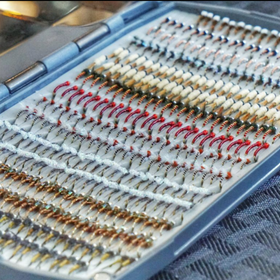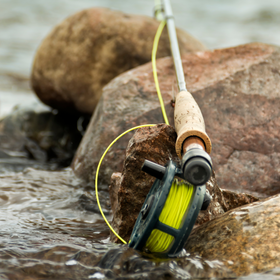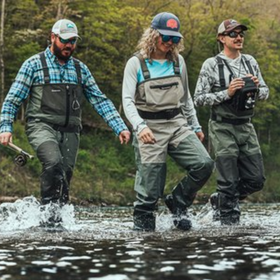Fishing Report: Deckers
South Platte River
The Williams Fork River is a top-notch fishery of its own. This beautiful fishery is nestled between the Williams Peaks and Middle Park and is truly a fly-fishing paradise. The two-mile stretch between the upper boundary of the Kemp Unit and the confluence of the Colorado River is a mixture or riffles, runs, and pocket water with one of the best populations of brown trout in the “west”. A 30-minute hike to the river keeps the crowds to a minimum. Anglers can catch trout with a variety of methods including nymphs, streamers, and dry flies. The hatches include caddis, blue-winged olives, midges, Tricos, and red quills. Being a tributary of the Colorado River-spring and fall-spawn runs bring some “lunkers” into the stream. Ideal flows for the “Fork” are between 100 and 250 cfs. The regulations are flies and lures only and all fish must be returned to the water immediately. The Williams Fork is one of the prettiest places on the planet. This Williams Fork is proof that trout don't live in ugly places.
Updated 9/23/2025
After Williams Fork Reservoir saw high flows for most of the summer, flows recently dropped back down to much more fishable levels (188 cfs). The fork has been crowded with anglers in search of big brown trout running up from the Colorado, but it's still a bit early for that.
Streamer fishing will be increasingly productive as we get into Fall, especially during low-light hours of the day. Nymphing with rigs consisting of Micro Eggs or San Juan Worms and midge or baetis combos is the way to go right now and through autumn.
Williams Fork River in Colorado offers exciting fly fishing opportunities for those willing to make the trek. Here are some effective fly patterns to consider for fishing on the Williams Fork River:
Blue-Winged Olives (BWOs): These may hatch sporadically in Spring and Fall. Carry patterns like Parachute Adams, Sparkle Duns, or Pheasant Tails in sizes #18 to #22 to imitate BWOs.
Midges: Midges are prevalent year-round. Use patterns like Zebra Midges, RS2s (Rim's Semblance 2), Mercury Midges, or Disco Midges in sizes ranging from #18 to #24.
Caddisflies: Caddis activity increases as temperatures rise. Patterns like Elk Hair Caddis, X-Caddis, or Stimulators in sizes #14 to #18 can be effective imitations.
Stoneflies: Stonefly nymphs become more active as the weather warms up. Carry patterns like Pat's Rubber Legs, Hare's Ear Nymphs, or Prince Nymphs in sizes #10 to #14.
Attractor Patterns: Bright and flashy attractor patterns like San Juan Worms, Egg Patterns, or Rainbow Warriors can be effective in catching the attention of fish, especially during runoff periods.
Streamers: Larger fish might respond to streamers, particularly if the water is high and off-color due to runoff. Woolly Buggers, Sculpin patterns, and other streamers in various sizes and colors can attract larger fish.
As always, observe the water conditions, insect activity, and the behavior of the fish to determine the most effective patterns and presentations. Adjust your techniques throughout the day as conditions change.








